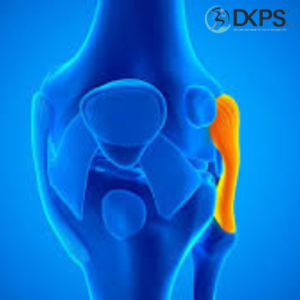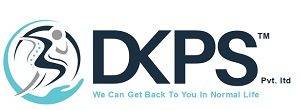- Home
- About Us
- DKPS Dealing
- BLOG
- Delhi NCR
- Delhi
- Physiotherapy at Home Near Me | Physiotherapist in South Delhi
- Best Chiropractor in Delhi
- Physiotherapist in Delhi
- Cupping Therapy in Delhi
- Home Nursing Services in Delhi
- Needle Therapy for Back Pain
- Sports Injury Physiotherapy
- Best Physiotherapist Visit at Home in Rohini Sector 24
- Physiotherapy at Home In Rohini Sector 9 |
- Physiotherapist in Pitampura | Physiotherapy at Home in Pitampura
- Physiotherapy at home in Rohini sector 29
- Physiotherapist in Paschim Vihar
- Physio home visit | Home Visit Physiotherapy |
- Physiotherapist in Saket | Best Physiotherapist in Saket |
- Physiotherapist In Janakpuri | Best Physiotherapist in Janakpuri |
- Best Physiotherapist in Punjabi Bagh | Punjabi Bagh Physiotherapist |
- Best Physiotherapist Service at Home in Dwarka, Delhi
- Best Physiotherapist in Chandigarh at Home Visit
- Faridabad
- Gurugram
- Noida
- Best Physiotherapy Gorakhpur
- Best Physiotherapist in Lucknow | Physiotherapist in Lucknow near me |
- Delhi
- Mumbai
- Delhi NCR
- Department
- Doctors
- Gallery
- Packages
- Contact Us
- Home
- About Us
- DKPS Dealing
- BLOG
- Delhi NCR
- Delhi
- Physiotherapy at Home Near Me | Physiotherapist in South Delhi
- Best Chiropractor in Delhi
- Physiotherapist in Delhi
- Cupping Therapy in Delhi
- Home Nursing Services in Delhi
- Needle Therapy for Back Pain
- Sports Injury Physiotherapy
- Best Physiotherapist Visit at Home in Rohini Sector 24
- Physiotherapy at Home In Rohini Sector 9 |
- Physiotherapist in Pitampura | Physiotherapy at Home in Pitampura
- Physiotherapy at home in Rohini sector 29
- Physiotherapist in Paschim Vihar
- Physio home visit | Home Visit Physiotherapy |
- Physiotherapist in Saket | Best Physiotherapist in Saket |
- Physiotherapist In Janakpuri | Best Physiotherapist in Janakpuri |
- Best Physiotherapist in Punjabi Bagh | Punjabi Bagh Physiotherapist |
- Best Physiotherapist Service at Home in Dwarka, Delhi
- Best Physiotherapist in Chandigarh at Home Visit
- Faridabad
- Gurugram
- Noida
- Best Physiotherapy Gorakhpur
- Best Physiotherapist in Lucknow | Physiotherapist in Lucknow near me |
- Delhi
- Mumbai
- Delhi NCR
- Department
- Doctors
- Gallery
- Packages
- Contact Us
Lateral Collateral Ligament (LCL) Injury
- Home
- Lateral Collateral Ligament (LCL) Injury

Lateral Collateral Ligament Injury
what is a lateral collateral ligament?
The human knee is one of the most complex joints in the body. It supports our body weight and allows us to perform a wide range of movements such as walking, running, jumping, and more. However, due to its complex nature, the knee is also highly susceptible to injuries. One such injury is a lateral collateral ligament (LCL) tear or sprain. In this article, we will take an in-depth look at the LCL, its functions, common injuries, diagnosis, and treatment options.
The LCL, also known as the fibular collateral ligament, is a tissue band connecting the femur (thigh bone) to the fibula (the smaller bone in the lower leg). It is located on the outer side of the knee and is responsible for providing stability to the joint, preventing the knee from bending too far sideways or rotating too much.
Functions of the Lateral Collateral Ligament:
The LCL has several functions that are crucial to the proper functioning of the knee joint. These functions include:
Stability: The LCL provides lateral stability to the knee joint, which helps to prevent excessive movement of the joint from side to side.
Rotation Control: The LCL also helps to control the rotation of the knee joint, preventing excessive inward or outward rotation.
Joint Protection: The LCL acts as a protective shield, preventing the knee from hyperextending or overextending, which can lead to severe injuries.
Common Injuries:
LCL injuries are less common than injuries to other ligaments of the knee, such as the anterior cruciate ligament (ACL) or the medial collateral ligament (MCL). However, they can still occur and are typically caused by direct blows to the inner side of the knee or by sudden twisting motions.
Symptoms of an LCL injury may include:
Pain or tenderness on the outer side of the knee.
Swelling or bruising around the knee joint.
Limited range of motion in the knee joint.
Instability or a feeling of looseness in the knee joint.
Diagnosis:
If you suspect that you have an LCL injury, it is important to see a medical professional for an accurate diagnosis. Your doctor will perform a physical examination and may also order imaging tests, such as an X-ray or MRI, to get a closer look at the knee joint and surrounding tissues.
During the physical examination, your doctor may perform a varus stress test. This involves placing pressure on the inside of the knee joint while the knee is slightly bent. If there is excessive movement or pain, it may indicate an LCL injury.
Treatment Options:
The treatment for an LCL injury will depend on the severity of the injury. Minor LCL injuries may heal on their own with rest, ice, compression, and elevation (RICE). However, more severe injuries may require medical intervention.
Non-Surgical Treatment: If the LCL injury is minor, non-surgical treatment options may be recommended. This may include Physical therapy, which can help to strengthen the muscles around the knee joint and improve the range of motion. Your doctor may also recommend the use of a knee brace to provide additional support to the knee joint.
Surgical Treatment: If the LCL injury is severe or does not respond to non-surgical treatments, surgery may be necessary. The goal of surgery is to repair or reconstruct the damaged ligament. This may involve using a graft to replace the damaged ligament, which is secured to the bone with screws or other hardware.
Prevention: While it may not be possible to completely prevent LCL injuries, there are steps you can take to reduce your risk of injury. These include: Strengthening Exercises: Strengthening the muscles around the knee joint can help to improve overall joint stability and reduce the risk of injury. Exercises that target the quadriceps, hamstrings, and calf muscles can all be beneficial. Proper Training Techniques: If you participate in sports or other physical activities, it is important to use proper techniques and form to reduce the risk of injury. This may involve working with a coach or trainer to learn proper techniques and form.Protective Equipment: Wearing protective equipment, such as knee pads or braces, can help to reduce the risk of injury during physical activities.Rest and Recovery: Taking time to rest and recover after physical activity is also important. This allows your body time to repair and rebuild muscles and tissues, reducing the risk of injury. Conclusion: The lateral collateral ligament is an important structure that provides stability and support to the knee joint. While LCL injuries are less common than other knee injuries, they can still occur and can cause significant pain and discomfort. If you suspect that you have an LCL injury, it is important to seek medical attention to get an accurate diagnosis and appropriate treatment. With proper treatment and preventive measures, you can reduce your risk of LCL injury and maintain a healthy, active lifestyle.
How Physiotherapy Can Help in Lateral Collateral Ligament (LCL) Injury-
Lateral Collateral Ligament (LCL) injuries are common in the knee and can cause pain, instability, and limitations in mobility. Physiotherapy plays a crucial role in the rehabilitation and recovery process for individuals with LCL injuries. In this article, we will explore how physiotherapy can help in the management of LCL injuries and promote optimal healing and functional outcomes.
Assessment and Diagnosis-
A physiotherapist will begin by conducting a thorough assessment to evaluate the extent of the LCL injury and assess any associated damage or secondary complications. This assessment may include a detailed history, physical examination, and possibly imaging studies, such as an MRI, to determine the severity of the injury.
Pain and Inflammation Management-
One of the primary goals of physiotherapy in LCL injury is to manage pain and reduce inflammation. The physiotherapist may employ various techniques such as ice or cold therapy, electrical modalities, and manual therapy to alleviate pain and control swelling.
Additionally, the physiotherapist may provide guidance on the use of pain-relieving medications and suggest home-based strategies, such as rest, elevation, and the application of ice packs, to manage pain and promote healing.
Range of Motion Exercises-
Restoring and maintaining the range of motion in the knee joint is crucial in the rehabilitation of LCL injuries. The physiotherapist will prescribe specific exercises to improve flexibility and gradually increase the knee’s range of motion.
These exercises may include gentle stretching, active and passive range of motion exercises, and joint mobilization techniques. The physiotherapist will ensure that the exercises are performed correctly and monitor the progression to avoid any excessive stress on the healing ligament.
Strengthening and Stability Exercises-
Once pain and swelling have subsided, the focus of physiotherapy shifts towards strengthening the muscles around the knee joint to provide stability and support. The physiotherapist will prescribe exercises that target the quadriceps, hamstrings, calf muscles, and hip muscles.
Strengthening exercises may include leg presses, squats, lunges, step-ups, and various resistance training exercises. These exercises not only promote muscle strength but also enhance joint stability and proprioception, which are vital for preventing future injuries and restoring normal function.
Balance and Proprioception Training-
Balance and proprioception training are essential components of the rehabilitation process for LCL injuries. These exercises help improve neuromuscular control, joint position sense, and overall stability of the knee.
The physiotherapist may incorporate exercises such as single-leg balance, wobble board exercises, and agility drills to challenge and improve proprioceptive abilities. By enhancing balance and proprioception, individuals can regain confidence in their knee’s stability and reduce the risk of re-injury.
Functional Rehabilitation-
Physiotherapy for LCL injuries goes beyond isolated exercises and focuses on functional rehabilitation. The physiotherapist will gradually introduce activities and movements that mimic real-life tasks, such as walking, stair climbing, running, and sport-specific drills.
Functional rehabilitation aims to restore functional abilities, improve coordination, and enhance performance in specific activities or sports. The physiotherapist will closely monitor the individual’s progress, adjust the exercises as needed, and ensure a safe and effective return to daily activities and sports.
Education and Injury Prevention-
Physiotherapists play a vital role in educating individuals about their LCL injury, its management, and injury prevention strategies. They provide guidance on proper body mechanics, biomechanics during sports or physical activities, and techniques to reduce the risk of future knee injuries.
Furthermore, the physiotherapist may offer advice on appropriate footwear, bracing, taping, and the use of protective equipment to support the knee joint during physical activities.
Collaborative Approach-
Physiotherapy for LCL injuries often involves a collaborative approach, with physiotherapists working closely with orthopedic surgeons, sports medicine physicians, and other healthcare professionals. This collaborative approach ensures that the rehabilitation plan is comprehensive, tailored to the individual’s needs, and aligned with any surgical interventions or additional treatments.
Conclusion-
Physiotherapy plays a critical role in the management and rehabilitation of Lateral Collateral Ligament (LCL) injuries. Through a combination of pain management techniques, range of motion exercises, strengthening and stability training, balance and proprioception exercises, functional rehabilitation, and education on injury prevention, physiotherapists can help individuals recover from LCL injuries, regain knee stability, and return to their desired level of activity.
If you have experienced an LCL injury, it is recommended to consult with a qualified physiotherapist. They will assess your condition, develop an individualized treatment plan, and guide you through the rehabilitation process to optimize your recovery.
